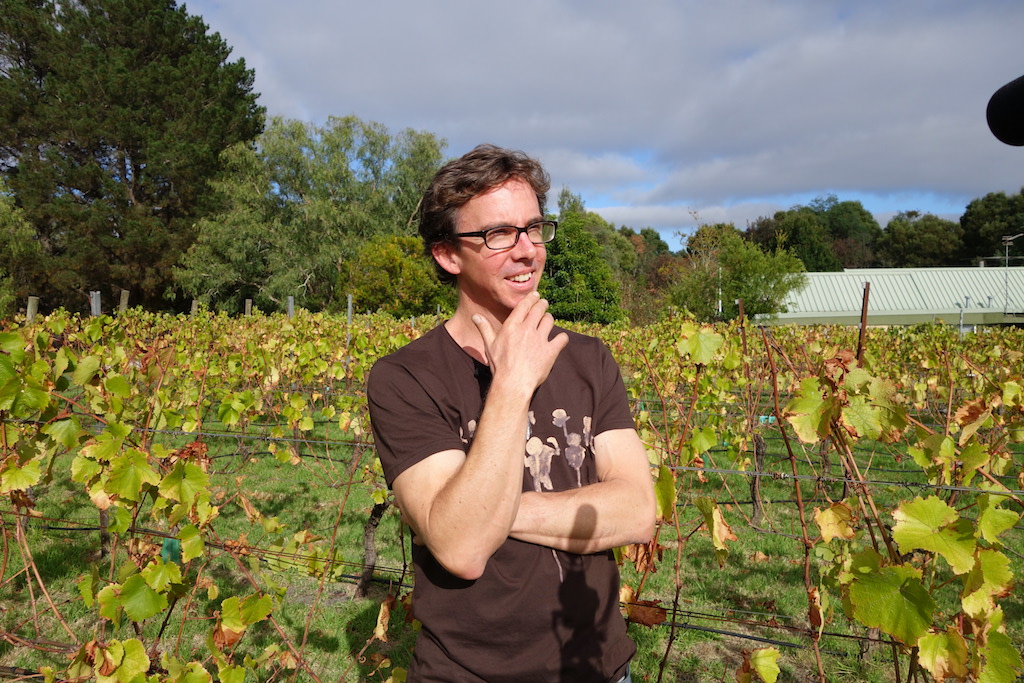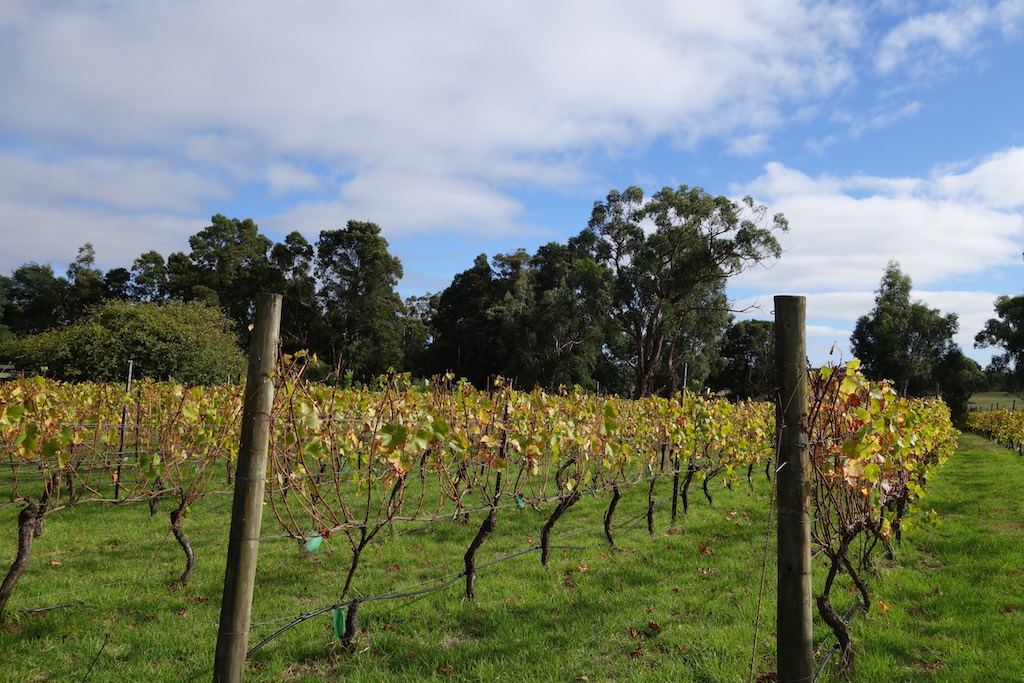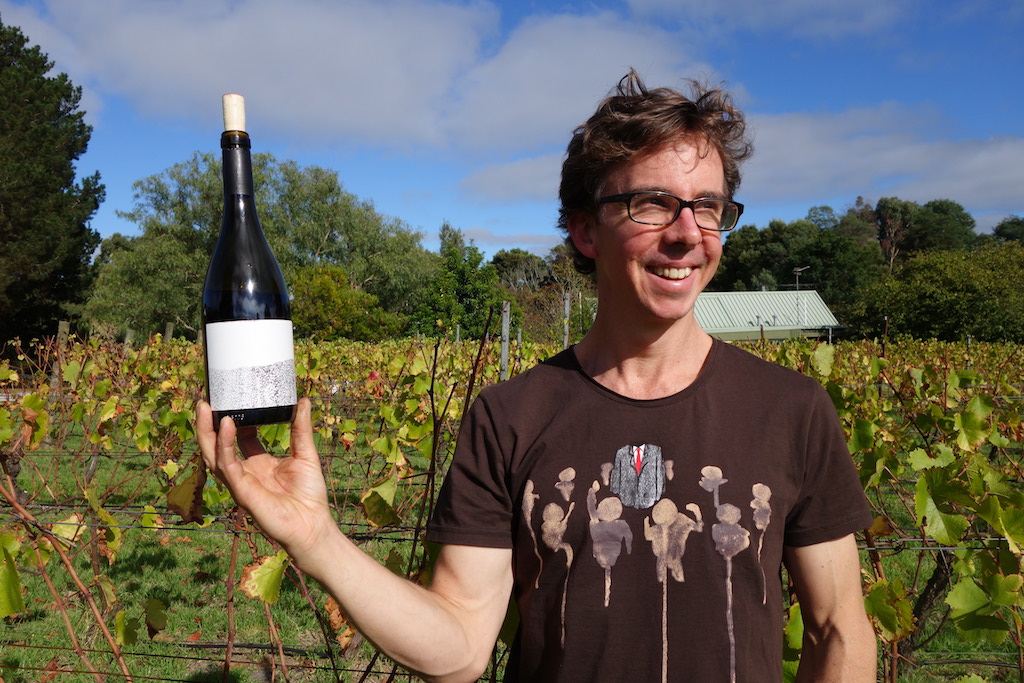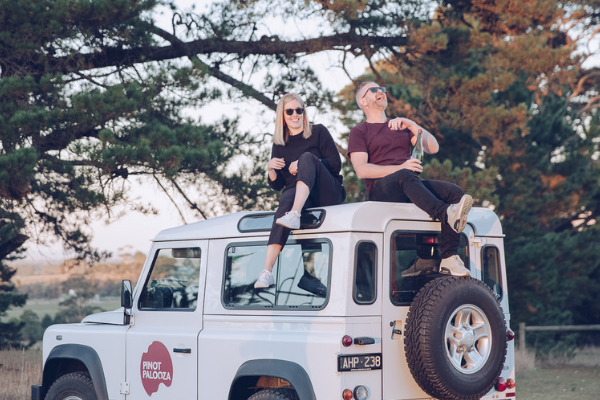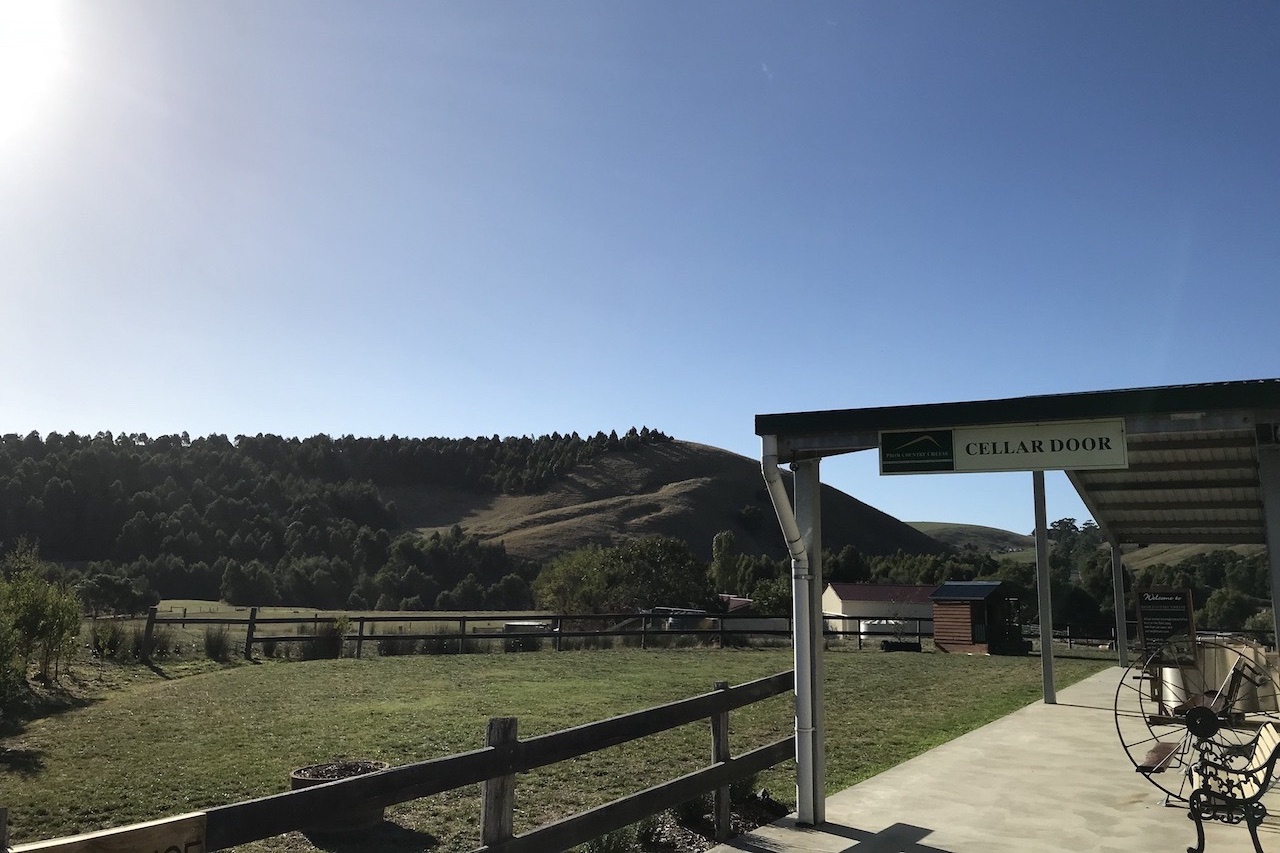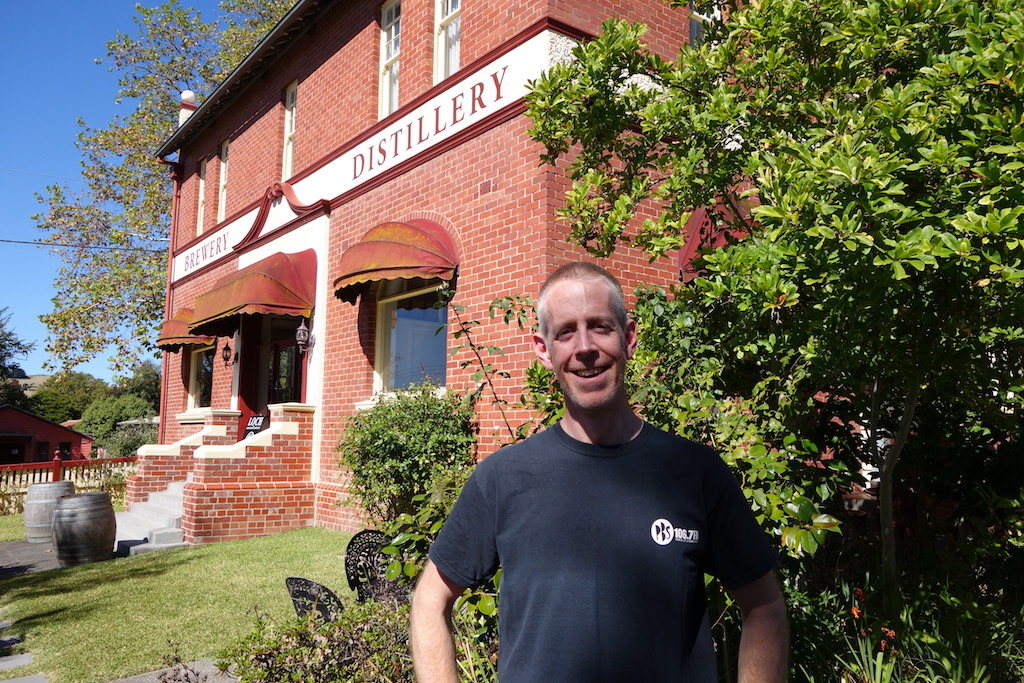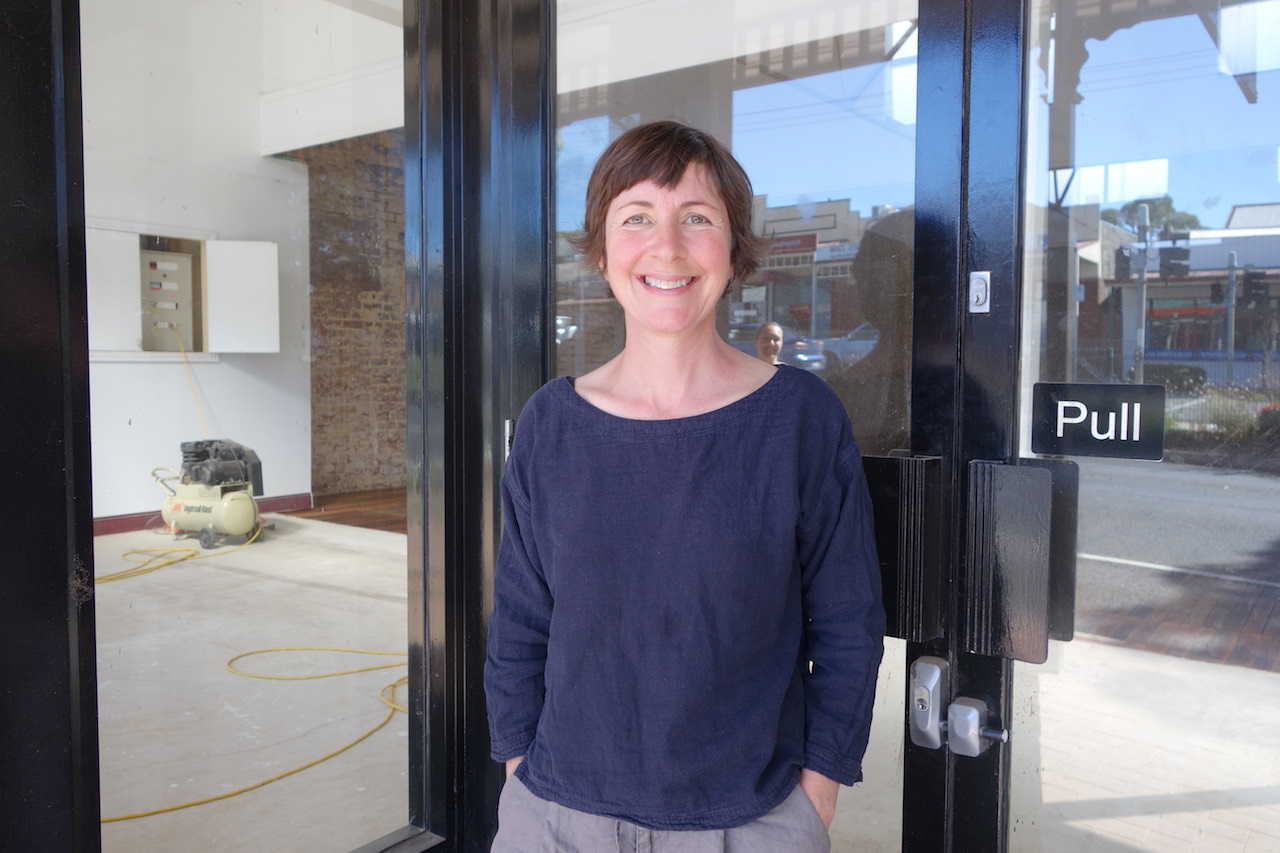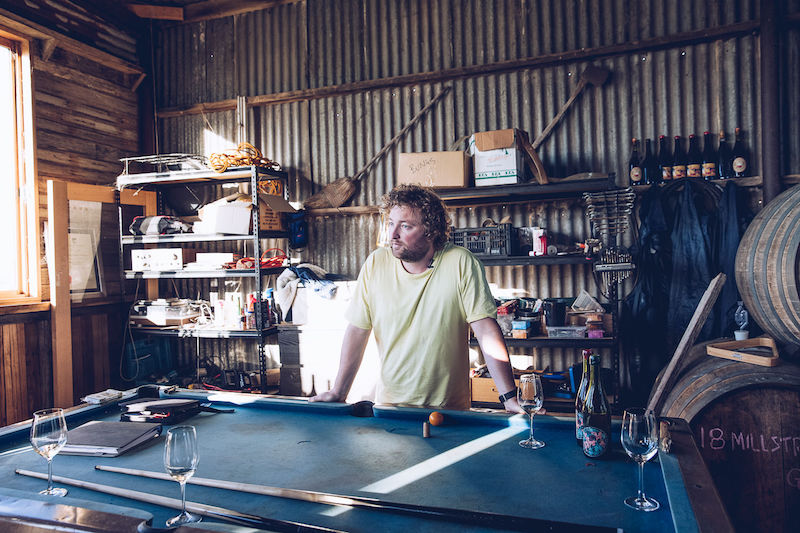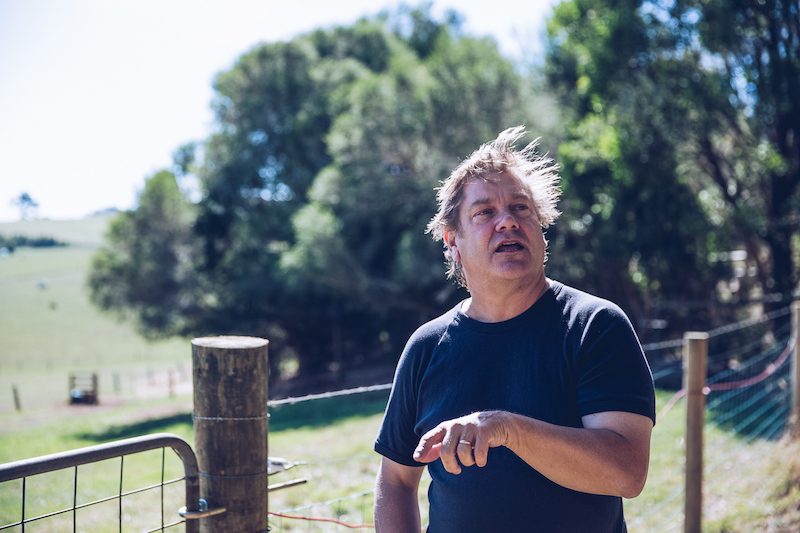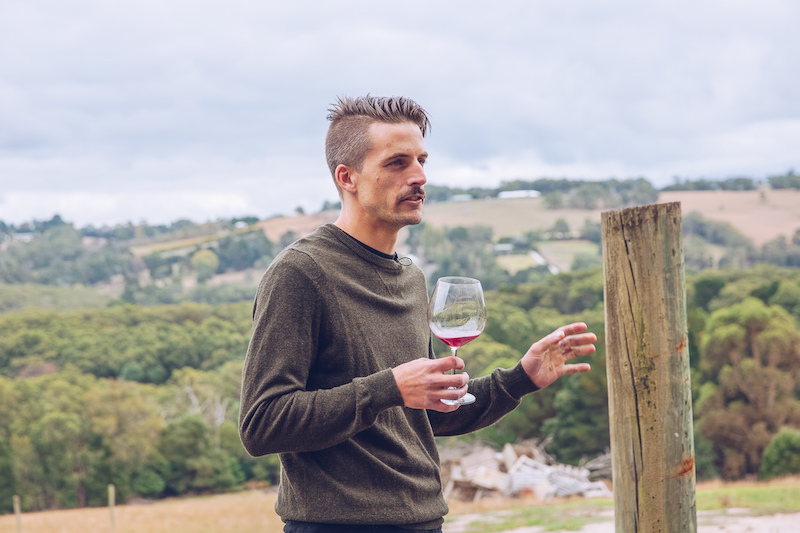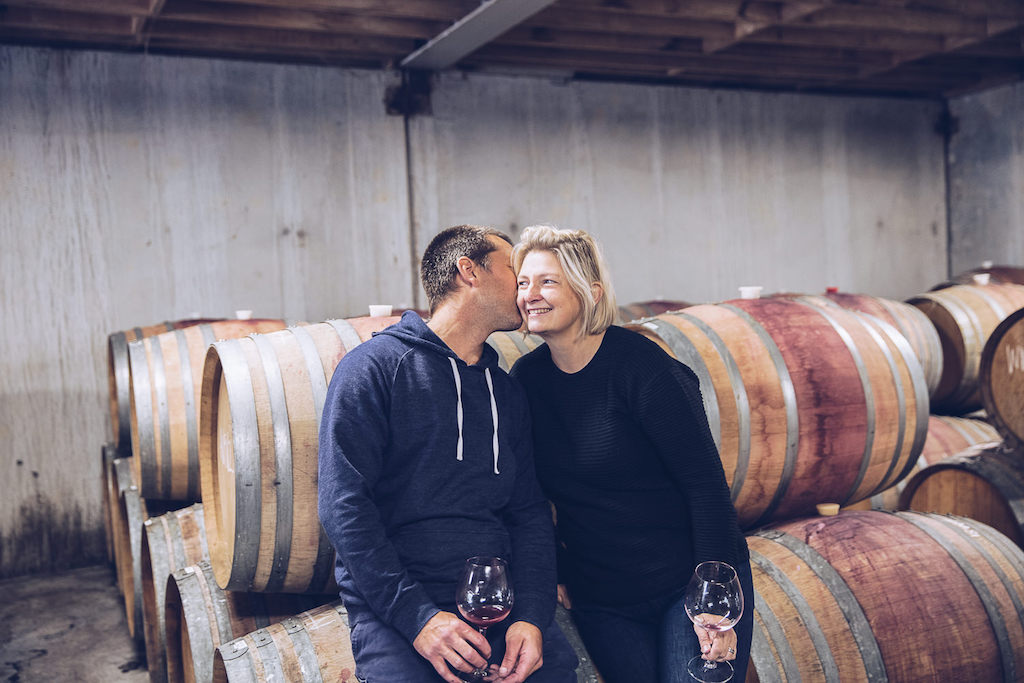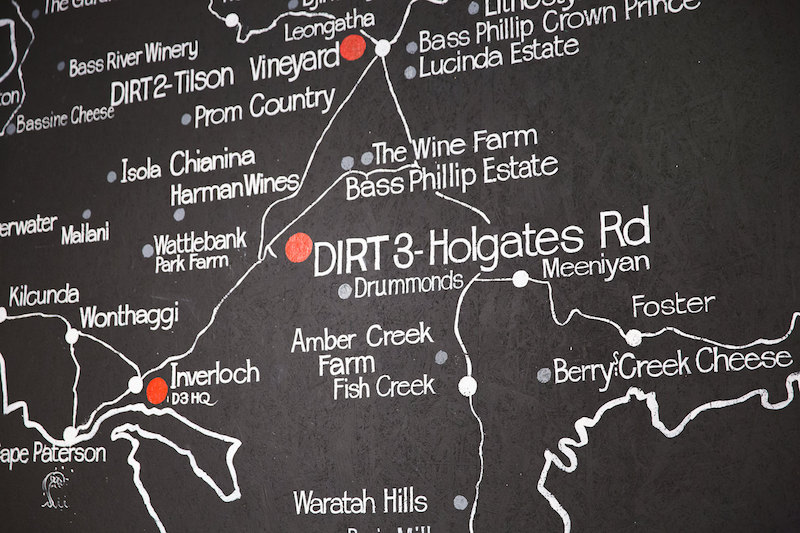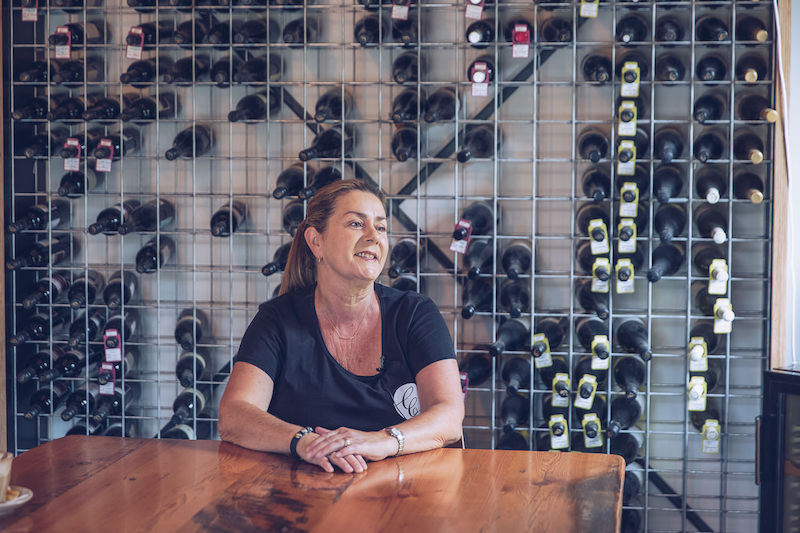Make it simple indeed. So what do you grow here?
Sauvignon, Pinot Gris, Pinot Noir, Cabernet Sauvignon, Riesling, Gewürztraminer, Chardonnay, Syrah.
All one acre of each, pretty much. So only a thousand bottles of each of those.
So, let’s talk about Pinot for a second. How would you describe your Pinot and also Gippsland Pinot in general?
What I like in my wines is I like just a little bit of an edge to them. And just a slightly more rustic, kind of like a gritty textural thing on the palate. They don’t have this massive big fruit bomb. You’re not gonna get that here. Cause I use stems when I make the wine, but not carbonic, so I’m getting a bit geeky here. I hate carbonic, okay? It destroys everything that you’re trying to show from the soil. So put it in the tank, step on it, really break those berries up but with all the stems. And it’s interesting, the first two years I used all stems; this year I did an experiment to see if I was maybe making a mistake. And I’ve got a barrel of de-stemmed, a barrel of stems, we can try it if you want. It’s very interesting to see the difference. And I still prefer the stem. Without the stem it’s just a little bit too primary and just a little bit … It just doesn’t have an edge to it.
What do you listen to during vintage?
Singer-songwriter. Nothing that is gonna be too out there, cause I’m always listening out for stuff. Listening out for presses making odd noises and … Yeah. So if it’s too loud I can’t concentrate too much. Yeah.
What do you think it is about Pinot that gets people going?
Cause if you make a mistake you see it. And if you don’t make a mistake and you get it right, it just sings better than anything else. But it’s gotta be grown in a cool climate to begin with. Firstly, that. And we’ve got that in Gippsland. And then after that just try not to muck about too much with it, but you can’t just do nothing, cause at that point as well if you do nothing, totally, no sulfur, no nothing, nothing, it’s just the same as interfering as much as possible.
Can you remember your first time tasting Pinot?
Yeah. Properly was at … Oh, what’s that chap who was in Burgundy? Oh, he was very generous. Damn, and I forgot his name. But he took us in and he had a Grand Cru Échezeaux and he bought in pizza. It was pizza and Grand Cru Échezeaux and it was just awesome.
So aside from coming here, what’s the one thing people should do when they come to Gippsland to visit?
You gotta go to the Prom. It’s the southernmost point of mainland Australia and it’s a nature reserve. It’s protected. It’s squeaky clean. There’s beaches called Squeaky Beach. That’s the one thing. And fishing. The fishing here is great.
Where do you Pinot?
I like it, it’s a verb.
Favorite place to Pinot? It’ll be around my dinner table for sure. In the house, with people, not on my own. Definitely with people. And just make sure Anna’s cooked up something really great that’ll go with it. Yeah.


